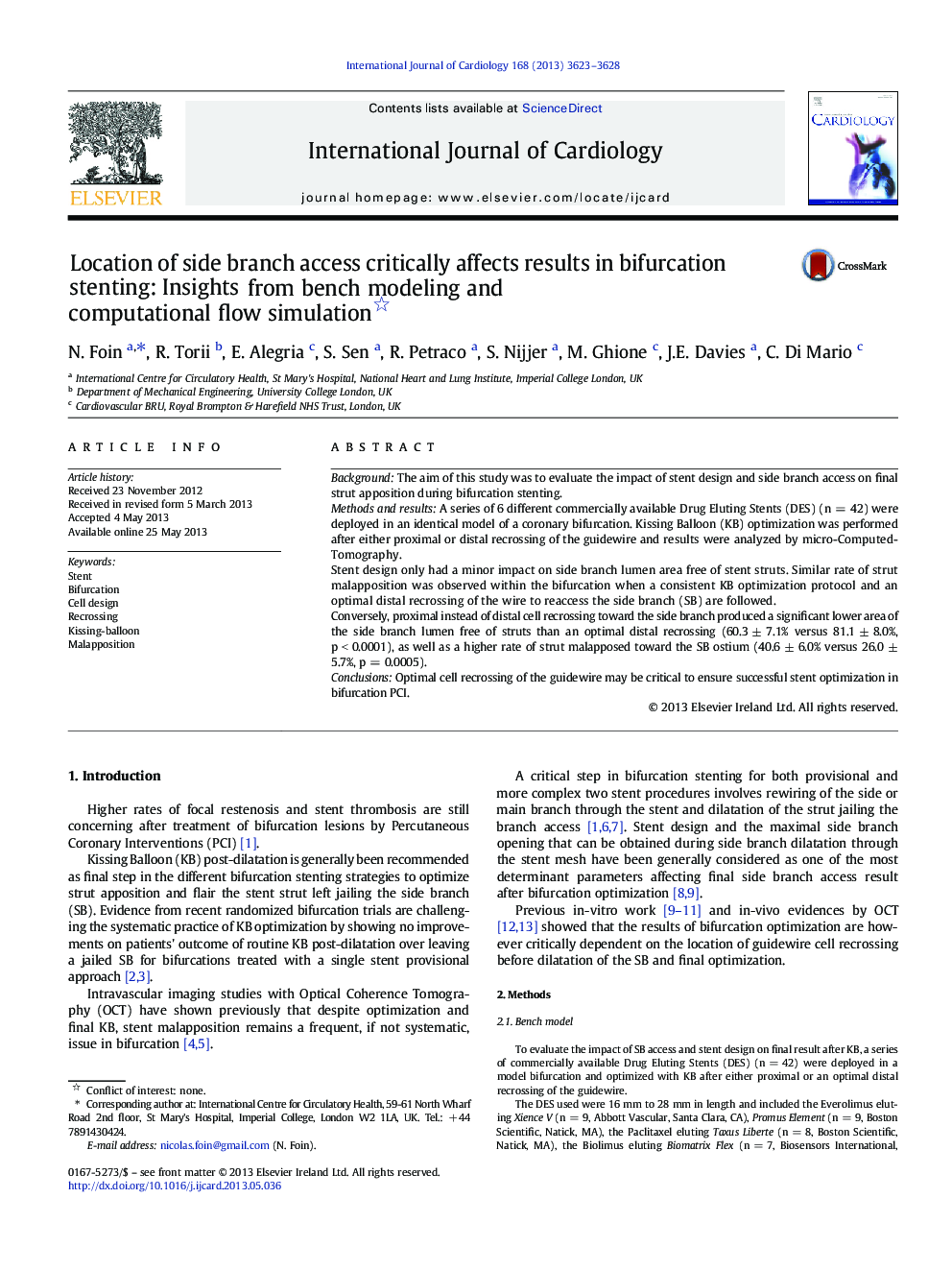| Article ID | Journal | Published Year | Pages | File Type |
|---|---|---|---|---|
| 5973793 | International Journal of Cardiology | 2013 | 6 Pages |
BackgroundThe aim of this study was to evaluate the impact of stent design and side branch access on final strut apposition during bifurcation stenting.Methods and resultsA series of 6 different commercially available Drug Eluting Stents (DES) (n = 42) were deployed in an identical model of a coronary bifurcation. Kissing Balloon (KB) optimization was performed after either proximal or distal recrossing of the guidewire and results were analyzed by micro-Computed-Tomography.Stent design only had a minor impact on side branch lumen area free of stent struts. Similar rate of strut malapposition was observed within the bifurcation when a consistent KB optimization protocol and an optimal distal recrossing of the wire to reaccess the side branch (SB) are followed.Conversely, proximal instead of distal cell recrossing toward the side branch produced a significant lower area of the side branch lumen free of struts than an optimal distal recrossing (60.3 ± 7.1% versus 81.1 ± 8.0%, p < 0.0001), as well as a higher rate of strut malapposed toward the SB ostium (40.6 ± 6.0% versus 26.0 ± 5.7%, p = 0.0005).ConclusionsOptimal cell recrossing of the guidewire may be critical to ensure successful stent optimization in bifurcation PCI.
